Abstract
A variable metric optimization method of numerical analysis has been used to recover known distributions of intrapulmonary ventilation-perfusion ratios from inert gas data. Hypothetical lungs were simulated and corresponding inert gas retentions calculated. By using error-free retentions for seven gases and a 50-compartment model, it was possible to recover distributions containing up to three modes accurately and with greater efficiency than with other numerical methods. When random error of a magnitude consistent with present analytical techniques was introduced into retention data, the recovered distributions differed qualitatively from the original ones. This resulted from the ill-conditioned nature of the mathematical problem, which makes a recovered distribution extremely sensitive to small errors in retention. Thus, present levels of measurement error represent an important limitation in current techniques for deriving distributions from inert gas measurements.
Full text
PDF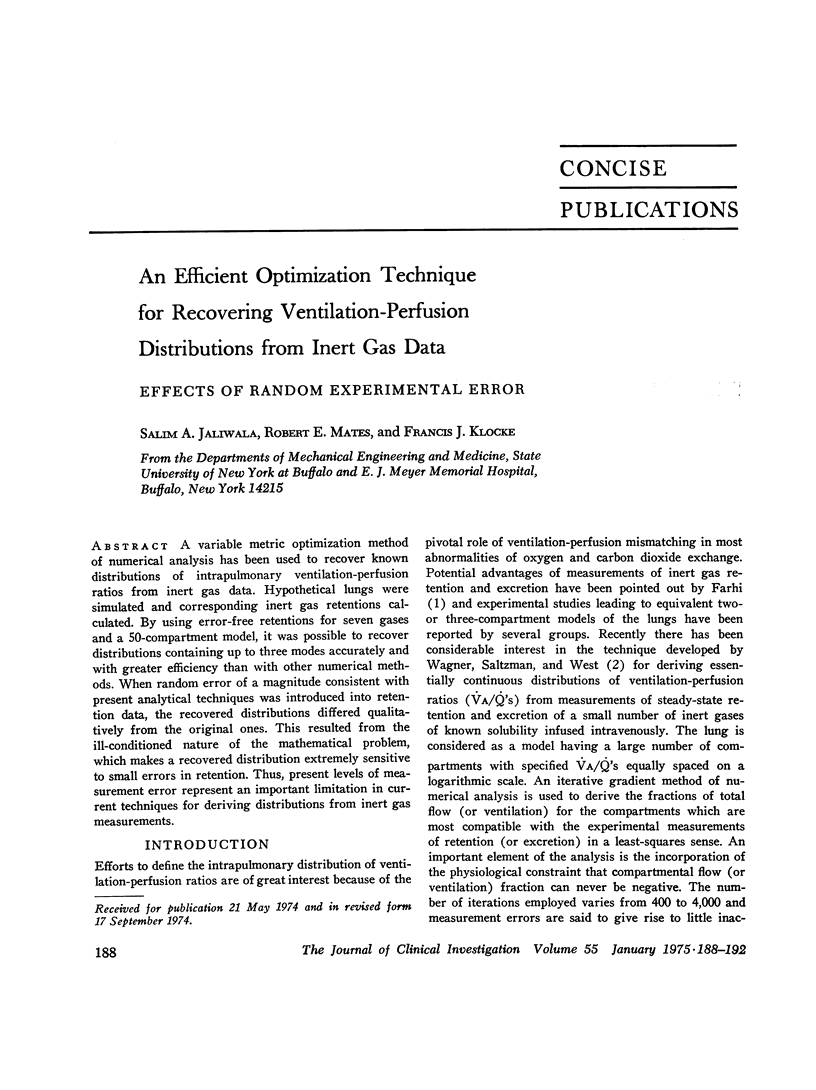
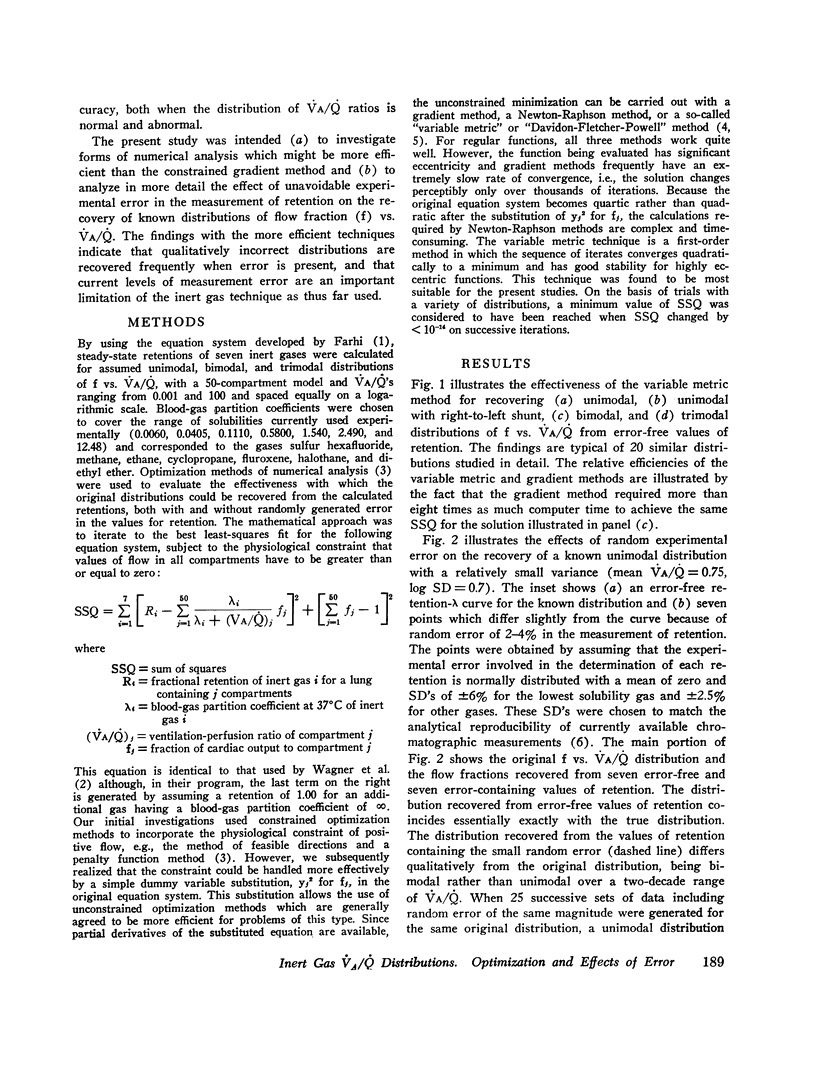
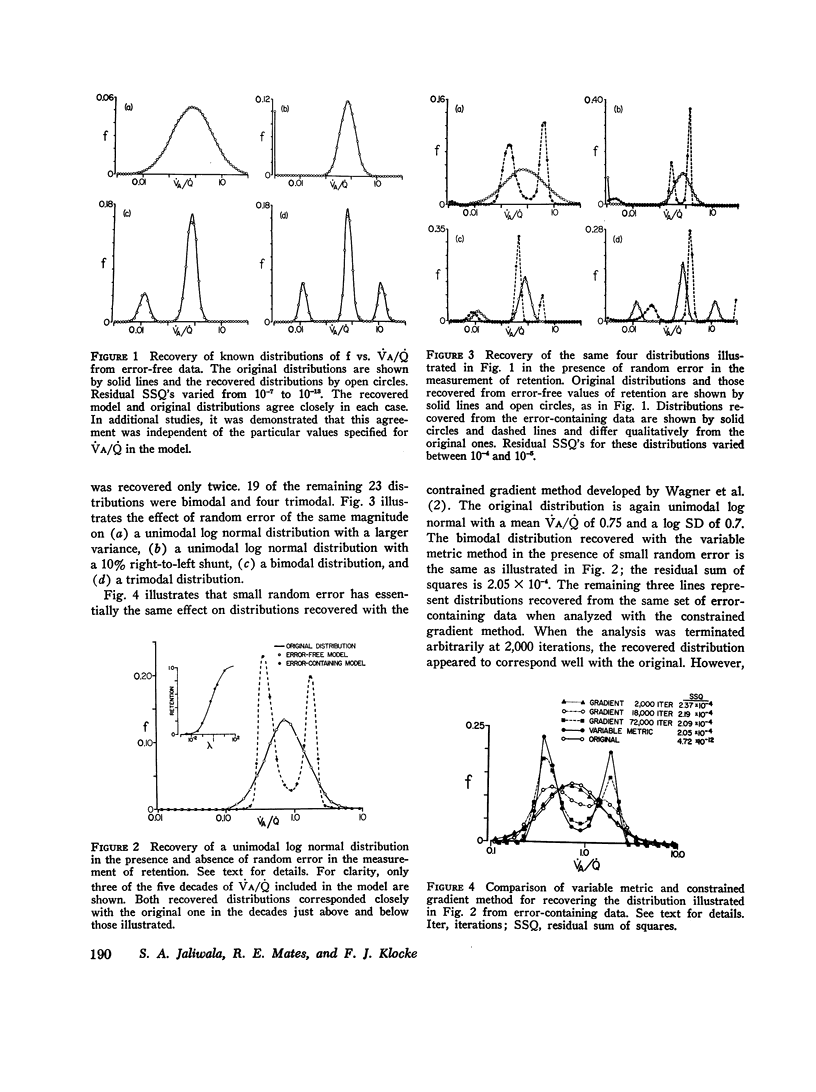
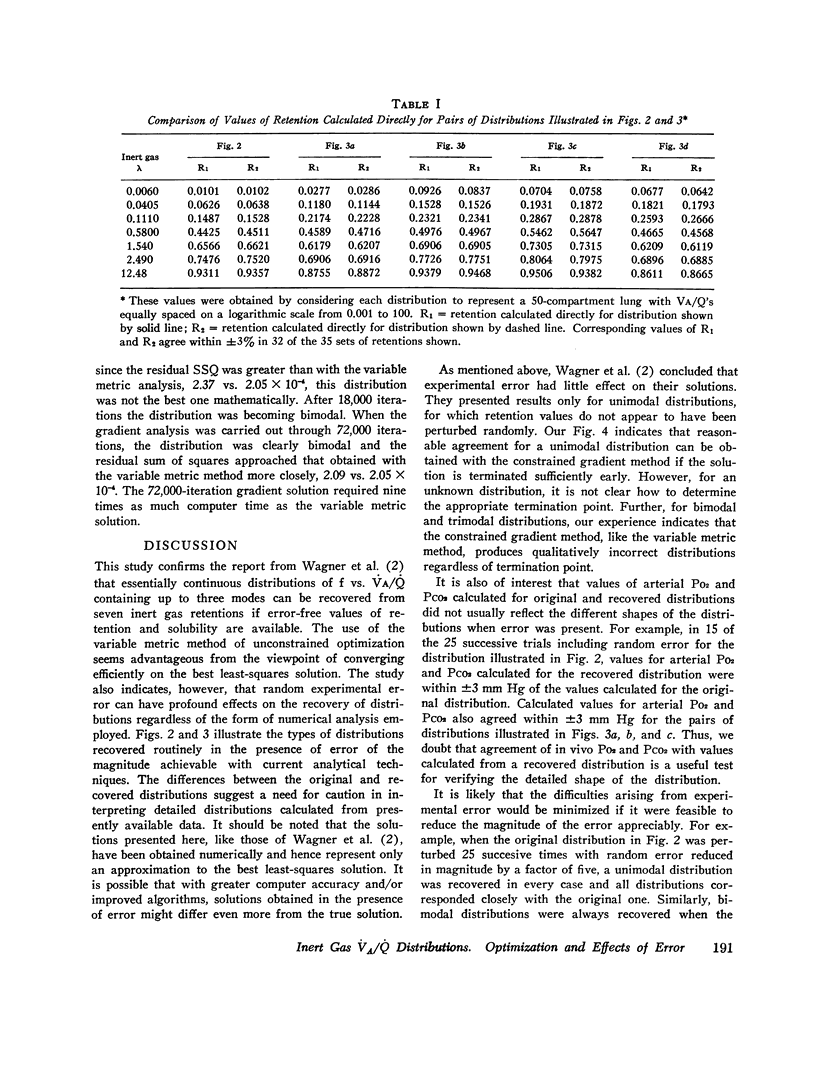
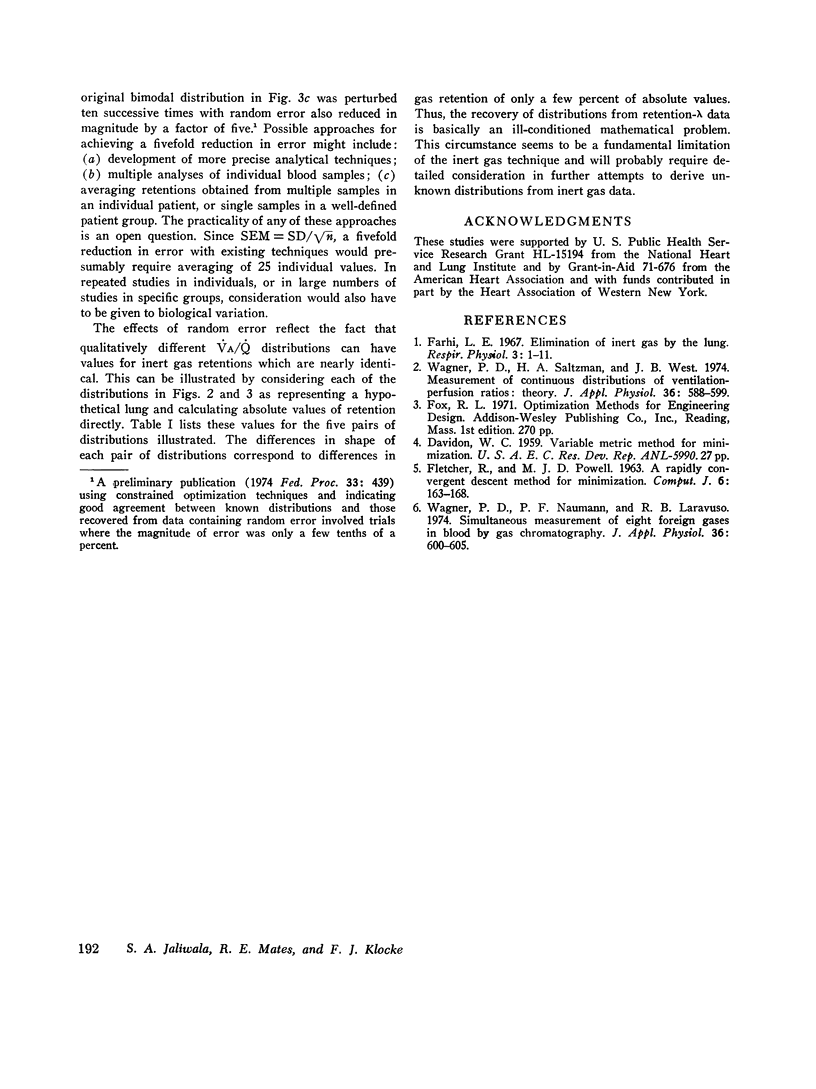
Selected References
These references are in PubMed. This may not be the complete list of references from this article.
- Farhi L. E. Elimination of inert gas by the lung. Respir Physiol. 1967 Aug;3(1):1–11. doi: 10.1016/0034-5687(67)90018-7. [DOI] [PubMed] [Google Scholar]
- Wagner P. D., Naumann P. F., Laravuso R. B. Simultaneous measurement of eight foreign gases in blood by gas chromatography. J Appl Physiol. 1974 May;36(5):600–605. doi: 10.1152/jappl.1974.36.5.600. [DOI] [PubMed] [Google Scholar]
- Wagner P. D., Saltzman H. A., West J. B. Measurement of continuous distributions of ventilation-perfusion ratios: theory. J Appl Physiol. 1974 May;36(5):588–599. doi: 10.1152/jappl.1974.36.5.588. [DOI] [PubMed] [Google Scholar]


